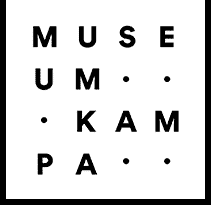Museum Kampa occupies historic buildings that were formerly the Sova’s Mills. The reconstruction project and the addition of modern glass structures have transformed the dilapidated mills into a museum for the 21st century.
The mills on Kampa island were first mentioned in 1393, although they were certainly built much earlier, and research has traced them back as far as the 10th century. The mills were founded by the Benedictine Convent of Saint George.
During the Hussite Revolution the mill was set on fire, and it became the property of Prague’s Old Town. In 1478 the townspeople gave the land to a councillor, Václav Sova z Liboslavi, to build a house and a hammer mill here, and there was also to be a flour mill for Prague’s citizens. Václav Sova gave the new mill its name, which it has retained to this day. Over the years a grinding shop, sawmill, lime kiln, beater and fulling and tanning mill were added, and there was also a small farm and a fruit and vegetable garden.
In 1574 the Old Town acquired the site once more. In 1589 a new mill was built of stone in the Renaissance style after the previous one, largely made of wood, burned down. In 1648, during the Thirty Years’ War, Swedish troops used the mill to station their artillery.
